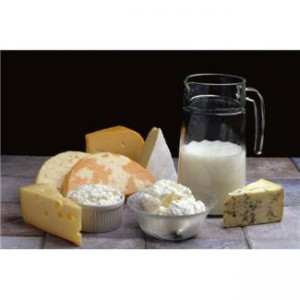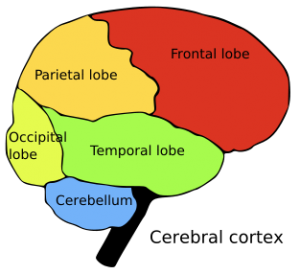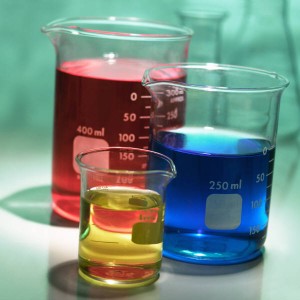Charles Darwin coined the term “Natural Selection” which means that as nature changes, the organisms that are able to adapt the quickest are the ones that get to access necessary resources and are able to survive. Organisms that are able to adapt are the ones that can continue to reproduce while those that are not able to adapt will eventually die.
Materials
3 Clear Plastic Cups
Water
Cotton Balls
Vegetable Oil
Instructions
- Fill each cup with water.
- Place a dry cotton ball in the water and observe what happens.
- Dip a cotton ball in oil, making sure that half of the cotton ball remains dry.
- Place it in a second cup and observe what occurs.
- Place a cotton ball in oil, completely covering the entire cotton ball.
- Place it in the third cup and observe what happens.
What’s Happening?When the cotton ball is not covered in oil, it sinks to the bottom of the cup. When it has some oil on it, the oily portion flips to avoid the water but when the cotton ball is completely covered in oil it is able to float. With Ocean Birds, they produce oil that Coats their Feathers and this allows them to float on top of the water. If they did not have this oily coating they would sink like the cotton ball did. If they only had the oily coat on the feathers that were in the water, then they may have a hard time not flipping over. By having all of their Feathers coated in oil, they are able to comfortably and safely float on top of the water until they are ready to dive under to catch fish.
Interested in how animals adapt and evolve over time? Check out these neat online resources!
- http://scienceline.ucsb.edu/getkey.php?key=427
- http://listverse.com/2013/03/25/10-weird-cases-of-incredible-animal-evolution/
And Here is one from our classroom at Science-Lessons.ca: a 52-Card Playing Deck for Ocean Learning, includes 4 several games and completely downloadable for Print and Cut-out – Crazy Starfish! Go Snorkeling! Sea Cluster! and ?Hypothesy?: Ordering: Ocean Science: Ocean Creatures Playing Cards
Also, an updated and more improved version with Teachers Pay Teachers!
]]>1. Sea Turtles live in all the world’s oceans except the ____________.
2. Adult Turtles swim in shallow lagoons, feeding mostly on various species of ______________.
3. Clownfish are native to the warm waters of the ___________ and __________ Oceans.
4. _________ have two stomachs and therefore can hunt for larger animals than their mouth could otherwise handle.
5. Angelfish are ____________ animals, because they hide amongst the crevices of the reef by night.
6. Through the 19th century, the word “kelp” was closely associated with seaweeds that were fired to obtain __________ (primarily sodium carbonate).
7. Manatees use taste and smell, in addition to sight, sound, and touch, to_________.
8. Salmon eggs usually range from _____________ in color.
9. Clownfish are one of the few fish that are safe from sea ______________.
10. The ___________ is a marine mammal, the heaviest member of the weasel family.
11. When eating, the otter first uses ___________ to dislodge prey and to open shells.
12. Seahorses have an equine profile, meaning they look sort of like ________.
13. ____________ have vibrant rainbow colors and deep, sideway-flat bodies.
14. Before spawning, salmon may grow a hump and grow canine teeth like a dog, developing a_______, a curve in the jaws.
15. Like___________ , anemones have stinging cells.
16. When a shark is resting, it does not use its nostrils, but rather, its___________, tiny holes behind each eye.
17. A _________tail is paddle-shaped.
18. ________ are large seaweeds belonging to the brown algae family.
19. _________ are pink and silver fish from the Atlantic and Pacific Oceans, and the Great Lakes.
20. Although corals can catch small fish and animals, they obtain most of their nutrients from photosynthetic unicellular_______.
21. __________ typically have five “arms” which radiate from a central disk.
22. __________ are slow-moving and live in warm, shallow, coastal waters, surviving above 15°C.
23. ____ ________ are related closely to coral and jellyfish.
24. _________ have proven problem-solving skills, social complexity and curiosity.
25. Coral have______ ; each one being like a tiny upside-down jellyfish with a shell.
26. ____ _______ “bob” around in sheltered areas such as sea grass beds, coral reefs, or mangroves.
QUIZ ANSWERS:
1. Arctic Ocean
2. Seagrass
3. Indian and Pacific
4. Sea Stars
5. Diurnal
6. soda ash
7. communicate
8. orange to red
9. Anemonae
10. sea otter
11. rocks
12. horses
13. Angelfish
14. Kype
15. Spiracles
16. jellyfish
17. manatee
18. Kelp
19. Salmon
20. algae
21. Starfish
22. Manatees
23. Sea Anenomae
24. Sharks
25. Polyps
26. Seahorses
If you really want to give yourselves an elementary science Brain-Squeeze this summer, here is an Oceans Quiz from National Geographics: http://ocean.nationalgeographic.com/ocean/ocean-extremes-quiz/
And Here is one from our classroom at Science-Lessons.ca: a 52-Card Playing Deck for Ocean Learning, includes 4 several games and completely downloadable for Print and Cut-out – Crazy Starfish! Go Snorkeling! Sea Cluster! and ?Hypothesy?: Ordering: Ocean Science: Ocean Creatures Playing Cards
Also, an updated and more improved version with Teachers Pay Teachers!
]]>Making your own Orgonite Muffins are Easy to Make at in-class or at home, Materials needed are:
Beezwax or EcoEpoxy Resin
Large Stir Spoon
Small crystals, even the smallest is great
2 kinds of scrap metals such as copper shavings (look around in your Mom and Dad’s garage or ask your teacher or local welder for some scraps)
a bit of paper and tape
Muffin Pan
For more instructions, visit here: http://beeswax-orgone.com/make-an-orgone/; and here: http://www.orgonite.info/how-to-make-orgonite-hhgs.html.
Orgonite Generators are said to turn negative energy into positive energy, purify the atmosphere, detoxify water, ends drought, help plants grow better, repel pests, require less water, Inspire a pleasant demeanor and balanced, happier moods, and help awaken your innate senses. We first made one with paper and a bit of goldleaf, our compass, ruler and marker – drawing on the paper, a geometric flower of life, adding positive words. We felt it generating positive energy and so thought it was an orgonite generator. To truly test our generator we would have to first make a blank one with the gold, one with the flower of life, one with tiny words on it, and one without, and test each one in the garden to see if it attracts life, or if the flowers around it perk up! Then, to document all of that! But then, we read that Reich’s devices were said to “generate” only when in a container. Otherwise they only “accumulated” the energy – hence, we believe what we made is an orgone accumulator (adding together inorganic and organic materials). Besides not being contained in a container with beeswax or EcoEpoxy, ours only had one kind of metal, and had no crystals. So our next step is to make the Eco-Epoxy muffins!
Here is a photo of one of Reich’s generators designed to do cloudbusting and make rainfall. (Photo: Extracted January 28, 2014 from: www. Wikipedia. Org / wiki / orgone.) People who make homemade orgonite generators have we believe, good intentions – putting positive feelings into our environments. Though, unfortunately, most generators have been made with epoxy fiberglass resin, that is reportedly not very good at all for the environment, in general. Thus, our personal concern is whether crystals “like” being encapsulated in epoxy (as it is also apparent that crystals are living and have feelings! Our sense is they would not like being encapsulated in a non-eco-friendly substance. So…..we searched and found alternatives that are earth-friendly. 3 Eco-alternatives:
1. Beeswax. Yellow Gold in color. http://beeswax-orgone.com/make-an-orgone/.
2. EcoEpoxy. Clear in color and others. http://www.earthsafefinishes.com/EcoEpoxy.html.
3. Ecopoxy. Amber in color. http://ecopoxysystemscanada.com/.
http://www.westwindhardwood.com/products/ecopoxy/intro.php.
Our friend who makes generators at home, says, if you are wondering if an orgone device works or not try testing it on something that can re-act to your orgone device like a plant or lizard or other animal. Testing may take minutes, hours, days or a week for optimal results. Try taking digital pictures of the subject being tested to document it. He says his generators makes his plants grow faster and greener and attracts interesting wildlife like frogs and lizards. He also writes words on his like Love Peace Harmony Compassion Forgiveness Happiness and Oneness.
And we like this person’s Kirlian photos (infrared photo-technology), also forwarded to us by our friend Kevin. Way cool. http://www.orgoniseafrica.com/blog/improving-orgonite. Are we, as human beings, orgonite generator? If we have contained within our bodies, more than one metal, organic and inorganic material, would we not also orgonite generators? We would say yes, to an extent, though we do not contain non-carbon based crystals. Crystals, are a different kind of life form on Planet Earth. What about if wear a crystal, then? Hmmmmm. Good Science Questions. Be sure and clean and care for your crystal, if you choose to wear one. We believe Crystals have Feelings too!
Other sources of information on Orgone Generators:
For more interesting and Fun Science Activities and Games, feel Free to visit:
http://www.science-lessons.ca/games/weather3.html
http://www.science-lessons.ca/games/brain.html
http://www.science-lessons.ca/games/space.html
http://www.science-lessons.ca/games/ocean.html
]]>
 In chemistry, the term physical change implies that a substance is changing form, like when water freezes to form ice. The water has not changed its identity, only its appearance from a liquid to a solid. Physical processes like shaking, hitting or even chewing can help things change their form. For example, when we chew our food, chewing (a physical process) helps us to make food easier to swallow by making it into a liquid. In this activity students will use shaking (a physical process) to transform a liquid (heavy whipping cream) into a solid.
In chemistry, the term physical change implies that a substance is changing form, like when water freezes to form ice. The water has not changed its identity, only its appearance from a liquid to a solid. Physical processes like shaking, hitting or even chewing can help things change their form. For example, when we chew our food, chewing (a physical process) helps us to make food easier to swallow by making it into a liquid. In this activity students will use shaking (a physical process) to transform a liquid (heavy whipping cream) into a solid.
In this activity, students will observe how physical processes like shaking can cause things to change. Materials:
Small glass jar with lid (baby food jars are the best)
Heavy whipping cream
Instructions: 1. Fill each jar about three-quarters of the way full.
2. Tightly seal each jar with its lid.
3. Shake the jar for 10-15 minutes or until the whipping cream has solidified.
How It Works: When the jar is shaken the particles are forced close together. A few particles clump together and soon, with all the shaking more and more particles clump together until most of are in a solid.
Discussion Questions to Ask: What did we add into the jar?
- What did we do to change the heavy whipping cream?
- When was the whipping cream a liquid?
- When was the whipping cream a solid?
Did you know that cooking is a chemical and a physical process? Exploring other food processes like making cheese, baking bread, even making a cake are easy ways to introduce the concept of physical and chemical changes. Chemistry is not just only in the lab or taught during science class. It is important to help young students recognize chemistry concepts inside and outside of the classroom. For more information on how to teach young students about chemical and physical change, visit: http://acswebcontent.acs.org/scienceforkids/index.html#Reactions
 For some of our Fun Learning Science games such as How to Become a Teenage Genius by playing Our Learning Brain, you can visit here:
For some of our Fun Learning Science games such as How to Become a Teenage Genius by playing Our Learning Brain, you can visit here:
http://www.science-lessons.ca/games/brain.html
http://www.science-lessons.ca/games/forceenergy.html
http://www.science-lessons.ca/games/weatherbingo4.html
http://www.literature-enrichment.com/
]]>

School is Back in Full Swing and so is our Learning Fun in Elementary Science! This activity can be done at home or in school but be careful with the pepper – it can make you sneeze and should never be put near the eyes! Have fun!
Pepper and Water Chase:
Not all liquids can be mixed together. Oil and vinegar are insoluble, meaning they do not mix together. Liquids that do not mix well together will try hard to separate into layers to form what chemist call a suspension.
In this activity students will observe two insoluble liquids and how they react around when mixed with each other.
Materials:
Milk & Food Coloring
Water & Pepper
Liquid Dish Soap
Flat pan with sides (cake pans work great)
Toothpicks
Instructions:
- In the pan add about a half-inch of milk to cover the bottom of the pan.
- Add several different colored drops of food coloring.
- Dip a toothpick into the liquid soap; be sure to make sure any excess soap drips are removed. There should be some soap on the tip of the toothpick.
- Place the toothpick (with the end with the soap first) in the center of the pan and watch the milk and food-coloring move.
(The milk may begin to swirl as it continues to try to move away from the soap on the toothpick). You can repeat this same activity using water and pepper. Placing the water and pepper in the pan and using a toothpick with liquid soap to make the pepper scatter.
How It Works:
The soap is made up of water and soap particles. In the milk the fat particles are hydrophobic meaning they do not like water and want to move away from the water in the soap. This is what is observed when the colors spread and the milk moves away from the soap on the toothpick. As the fat molecules in the milk continue to move away from the soap, they take the colors with them and form a swirling mixture of colors.
When teaching chemistry concepts that involve new vocabulary, it is helpful to create flashcards that can be posted in the classroom to reinforce the new word. For this activity, you can take a picture of the mixture, to remind the students about how insoluble mixtures do not mix or have a picture of an oil and water mixture. Science should not be a standalone topic, but instead can be incorporated in language and in math. To read more about integrating math into science, visit: http://www.edutopia.org/blog/integrating-math-science-creatively-ben-johnson
For Our Fun Learning Game about other great science activities, you can visit here!
http://www.science-lessons.ca/games/mammals.html
http://www.science-lessons.ca/games/space.html
http://www.science-lessons.ca/games/weather8.htm
http://www.literature-enrichment.com/
]]>